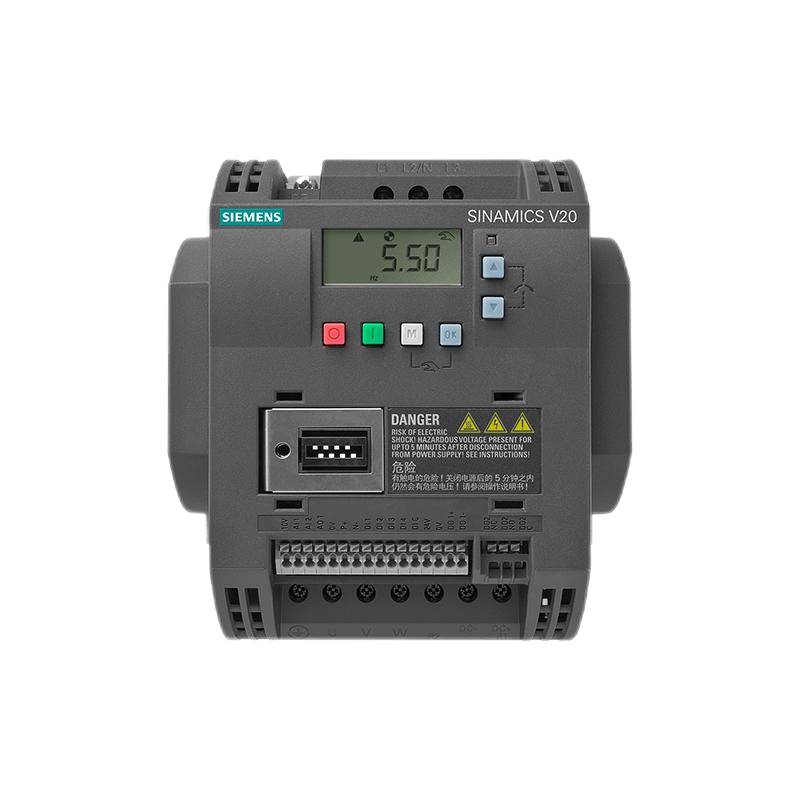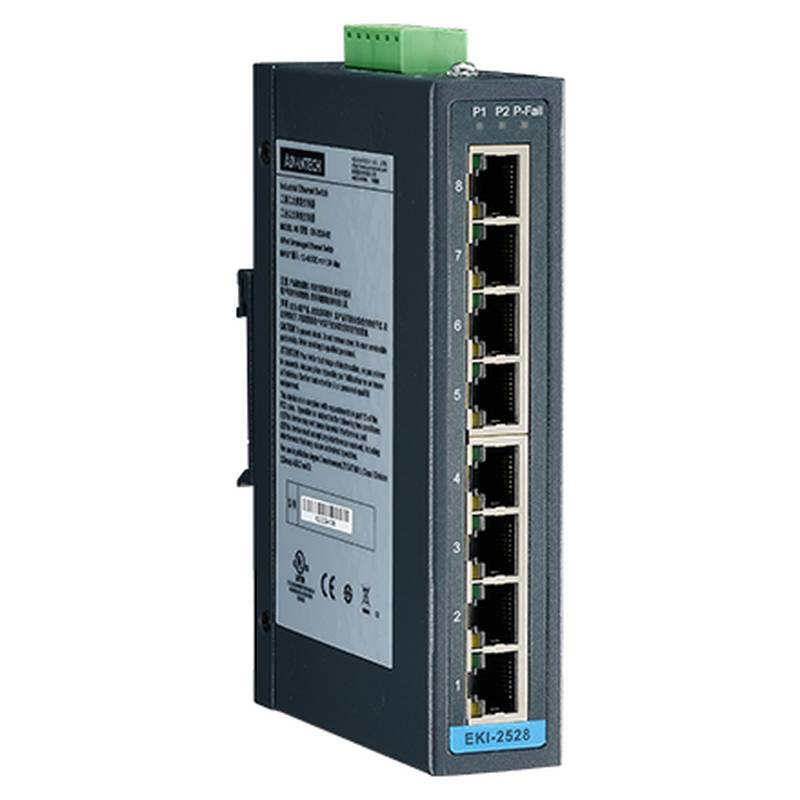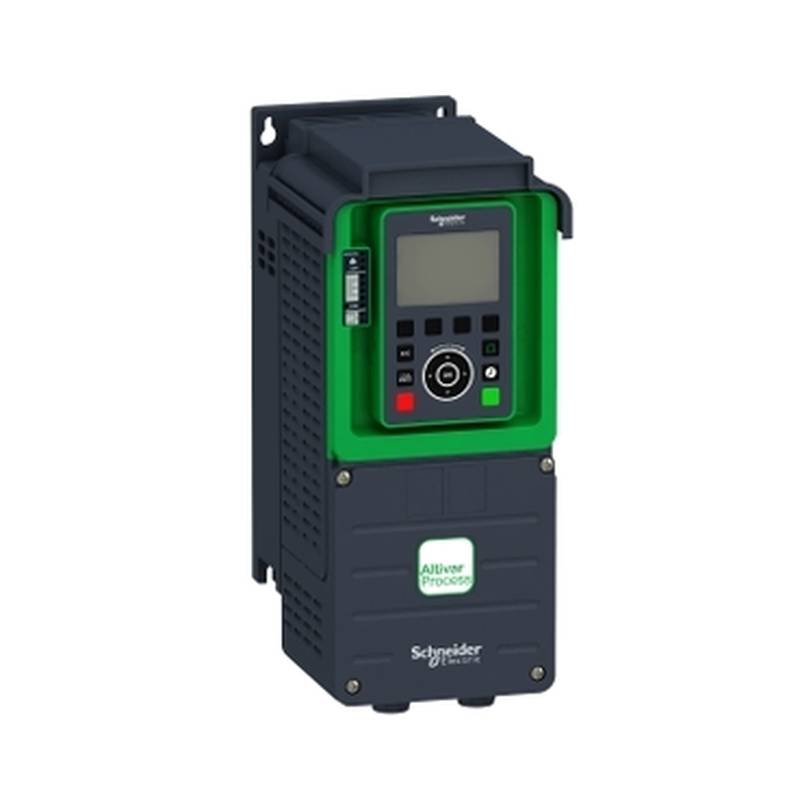
The Siemens 5SU1656-7KK40 is a high-performance double-pole Residual Current Circuit Breaker (RCCB) designed for robust protection in demanding industrial and commercial applications. This 40A, 300mA Type A device offers superior safety by detecting both sinusoidal AC and pulsating DC fault currents, safeguarding personnel and equipment against indirect contact and fire hazards. Its C-curve tripping characteristic ensures reliable operation in environments with moderate inductive loads. With a compact design and a 1P+N configuration, it facilitates efficient panel space utilization and simplified single-phase circuit protection.
Product Specifications
| Specification | Value |
| :---------------------- | :---------------------------------------- |
| Product Type | Double Pole RCCB (Residual Current Circuit Breaker) |
| Model Number | 5SU1656-7KK40 |
| Rated Current (In) | 40A |
| Rated Residual Current | 300mA |
| Tripping Type | Type A (AC and pulsating DC) |
| Number of Poles | Double Pole (1P+N) |
| Tripping Characteristic | C-Curve |
| Rated Voltage (Un) | 230/400V |
| Frequency | 50/60 Hz |
| Breaking Capacity (Icn) | 6kA |
| Terminal Type | Screw Terminals |
| Protection Class | IP20 (device), IP40 (enclosure) |
| Operating Temperature | -25°C to +45°C |
| Mounting Type | DIN Rail |
| Standards Compliance | IEC/EN 61008-1, IEC/EN 61009-2-1 |
Core Features & Market Positioning
The Siemens 5SU1656-7KK40 distinguishes itself through its robust Type A sensitivity, providing critical protection against a broader spectrum of fault currents than standard Type AC devices. This makes it an ideal choice for circuits where pulsating DC fault currents, common in electronic equipment, are a concern. Its double-pole configuration ensures complete isolation of both live and neutral conductors, enhancing safety and compliance with stringent electrical codes. The C-curve tripping characteristic is engineered to prevent nuisance tripping from inrush currents associated with inductive loads, such as motors and transformers, thereby maintaining operational continuity while offering superior protection. Siemens' reputation for reliability and quality in industrial electrical components solidifies the 5SU1656-7KK40's market position as a dependable solution for essential safety applications.
Key Application Scenarios
This 40A, 300mA Type A RCCB is extensively utilized in commercial buildings, industrial facilities, and sophisticated residential installations requiring high levels of residual current protection. Its primary applications include safeguarding circuits powering machinery with electronic control systems, sensitive data processing equipment, and areas with a higher risk of indirect contact, such as workshops or areas with moisture. The 300mA sensitivity is specifically suited for main incomer protection or for circuits where fire protection is a paramount concern, rather than immediate personnel protection which typically mandates lower residual current ratings. Its C-curve characteristic makes it particularly suitable for lighting installations, control circuits, and general-purpose power distribution in industrial settings with moderate inductive loads.
Practical System Integration Guidance
Integrating the Siemens 5SU1656-7KK40 into existing electrical systems is straightforward due to its standard DIN rail mounting and robust screw terminal connections. Ensure that the incoming live and neutral conductors are correctly identified and connected to the corresponding terminals, observing the polarity indicated on the device. The outgoing load conductors should then be connected to the output terminals. It is crucial to ensure that the upstream overcurrent protective device (e.g., a miniature circuit breaker or fuse) has a rated current compatible with the 40A rating of the RCCB and is correctly coordinated to provide selective protection. Verify that the system's neutral conductor is not switched or fused separately, as this can impair the proper functioning of the RCCB. A periodic test of the RCCB's functionality using the integrated test button is recommended to confirm its operational integrity.
Operation and Risk Mitigation
The Siemens 5SU1656-7KK40 operates by continuously monitoring the balance of current flowing through the live and neutral conductors. If an imbalance exceeding 300mA occurs, indicating a fault current leakage to earth, the device rapidly trips, disconnecting the power supply and mitigating the risk of electric shock or fire. Users should regularly press the integrated test button (usually marked 'T') to perform a functional check, ensuring the internal tripping mechanism is operational. In the event of repeated nuisance tripping, it is essential to investigate the protected circuit for underlying faults or excessive leakage currents from connected equipment rather than simply upsizing the RCCB. Always ensure the device is installed within its specified operating temperature range and protected from excessive dust and moisture to maintain reliable performance and longevity.
Scalability & Long-Term Value
The Siemens 5SU1656-7KK40 is designed for seamless integration within Siemens' comprehensive range of low-voltage electrical distribution components, offering excellent compatibility with other Siemens circuit breakers, busbar systems, and enclosures. This ensures that electrical infrastructure can be easily scaled and upgraded over time without compromising protection or performance. While this specific model is a standalone protection device, its adherence to international standards facilitates interoperability with components from various manufacturers. For facilities looking towards enhanced system monitoring and digital integration, Siemens offers advanced solutions that can complement traditional protection devices, enabling remote diagnostics and predictive maintenance strategies as part of a broader Industry 4.0 initiative.
Frequently Asked Questions
Q1: What is the primary function of the Siemens 5SU1656-7KK40?
This RCCB provides essential protection against dangerous earth fault currents. It detects imbalances between live and neutral conductors, tripping the circuit to prevent electric shock and fires.
It is designed to detect both AC and pulsating DC fault currents, offering versatile protection. The 40A rating makes it suitable for circuits with significant current demand.
The 300mA residual current sensitivity is optimized for main incomer protection and fire prevention scenarios. It ensures safety by quickly interrupting fault paths.
Q2: Why is the Type A classification important for this RCCB?
Type A RCCBs are sensitive to both sinusoidal AC and pulsating DC residual currents. This is crucial for modern electrical installations with electronic devices.
Many electronic appliances, such as LED drivers or variable speed drives, can generate pulsating DC fault currents. A Type A device will reliably detect these, unlike a Type AC device.
Choosing Type A ensures enhanced safety and compliance in environments where these types of fault currents are prevalent, offering superior protection against indirect contact.
Q3: What does the "C-Curve" tripping characteristic mean for this device?
A C-curve breaker is designed to handle moderate inductive or capacitive loads without nuisance tripping. It allows for higher inrush currents during startup.
This characteristic is ideal for circuits supplying motors, transformers, or lighting ballasts, where brief, high current surges are common. It ensures operational continuity.
The C-curve provides a balance between protection against overload and short circuits and the ability to withstand these temporary current increases.
Q4: Can this RCCB be used for personal protection (e.g., in bathrooms)?
No, this specific RCCB with a 300mA sensitivity is generally not suitable for direct personal protection in high-risk areas like bathrooms or outdoors.
For personal protection against electric shock, lower residual current ratings such as 10mA or 30mA are typically required by regulations. These offer a much quicker disconnection.
The 300mA rating is primarily intended for fire protection and protection against indirect contact in industrial and commercial applications.
Q5: How do I install the Siemens 5SU1656-7KK40?
The device mounts easily onto a standard 35mm DIN rail within an electrical enclosure. Ensure the enclosure provides adequate ventilation.
Connect the incoming live and neutral conductors to the designated line terminals, and the outgoing load conductors to the load terminals, observing correct polarity.
Always disconnect the main power supply before installation and ensure all connections are tight and secure to prevent overheating. A test of the unit should be performed after installation.
Q6: What is the breaking capacity (Icn) of this RCCB?
The breaking capacity (Icn) of the Siemens 5SU1656-7KK40 is 6kA. This indicates the maximum fault current it can safely interrupt.
A 6kA breaking capacity is sufficient for many standard residential and commercial installations, providing adequate protection against severe short-circuit faults.
It's important to ensure that the upstream protective device (like a circuit breaker or fuse) is coordinated with this 6kA rating for overall system safety.
Q7: What is the voltage rating of the 5SU1656-7KK40?
This RCCB is rated for 230/400V. This makes it suitable for standard single-phase and three-phase power distribution systems.
The 230V rating applies to single-phase circuits (Line-Neutral), while the 400V rating is for use in three-phase systems where it might protect circuits derived from such systems.
Always verify your system voltage matches the device's rating before installation to ensure safe and proper operation.
Q8: How often should I test the functionality of this RCCB?
It is recommended to test the RCCB's functionality at least once a year using the integrated test button. More frequent testing may be required by local regulations or site-specific risk assessments.
Regular testing ensures that the tripping mechanism is free to operate and that the device will respond correctly in the event of a fault. This is a critical safety procedure.
The test button simulates a residual current fault, causing the breaker to trip if it is functioning correctly. Always reset the breaker after the test.
Q9: Can I use this RCCB in conjunction with other circuit breakers?
Yes, the 5SU1656-7KK40 is designed to work within standard electrical distribution systems and can be installed alongside other circuit protection devices.
It's crucial for proper system design and selectivity that any upstream overcurrent protective device is rated appropriately and coordinated with the RCCB's 40A rating and 6kA breaking capacity.
Ensure that the neutral conductor is not switched or fused separately upstream of the RCCB, as this can compromise its protective function.
Q10: What is the difference between an RCCB and an RCBO?
An RCCB (Residual Current Circuit Breaker) primarily protects against earth leakage faults. It does not provide overcurrent (overload or short-circuit) protection.
An RCBO (Residual Current Circuit Breaker with Overcurrent Protection) combines the functions of an RCCB and a miniature circuit breaker (MCB). It protects against earth leakage, overload, and short-circuit faults in a single device.
Therefore, if a circuit requires both earth leakage protection and overcurrent protection from a single device, an RCBO would be specified. This Siemens model is an RCCB.
























